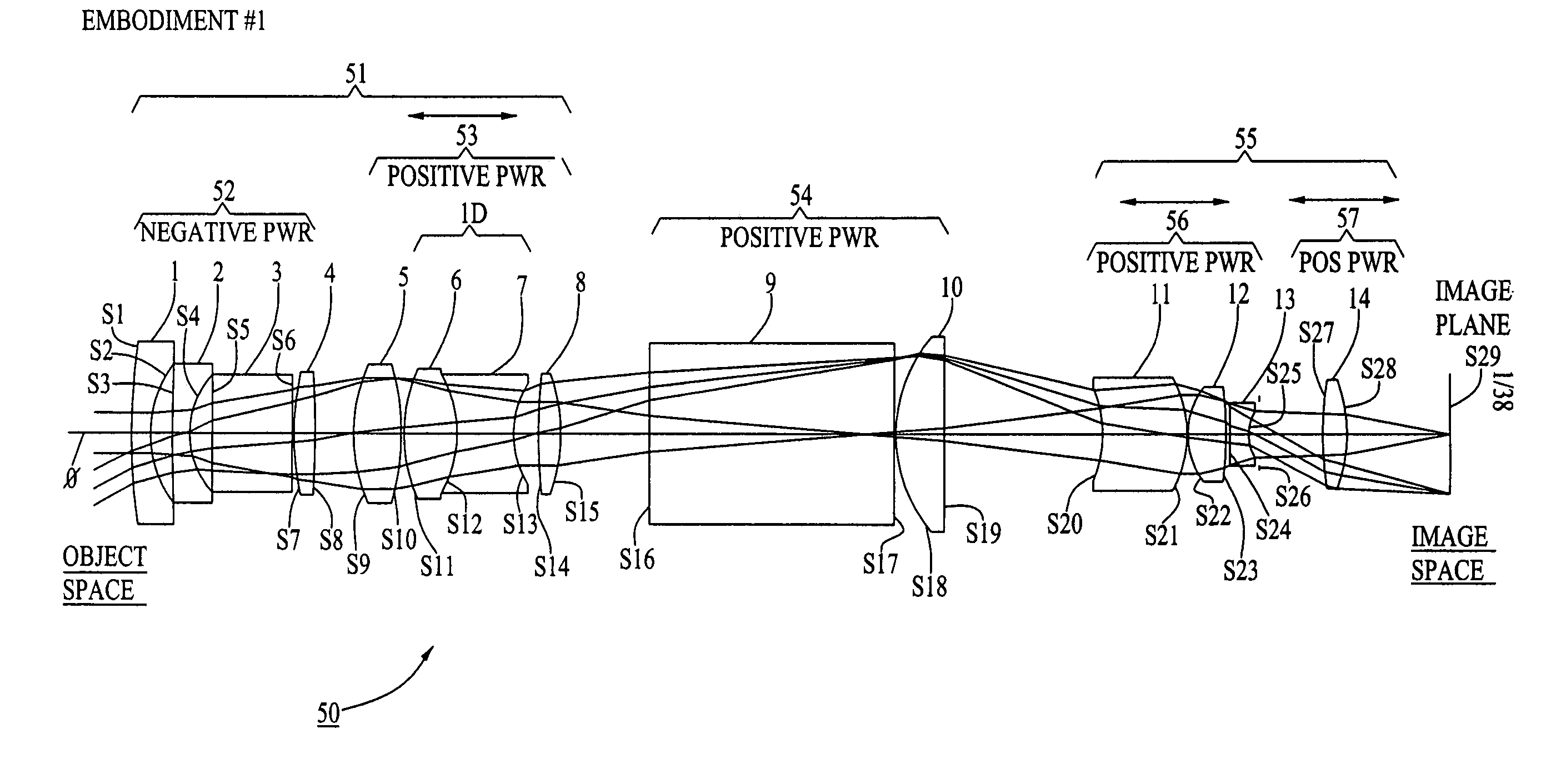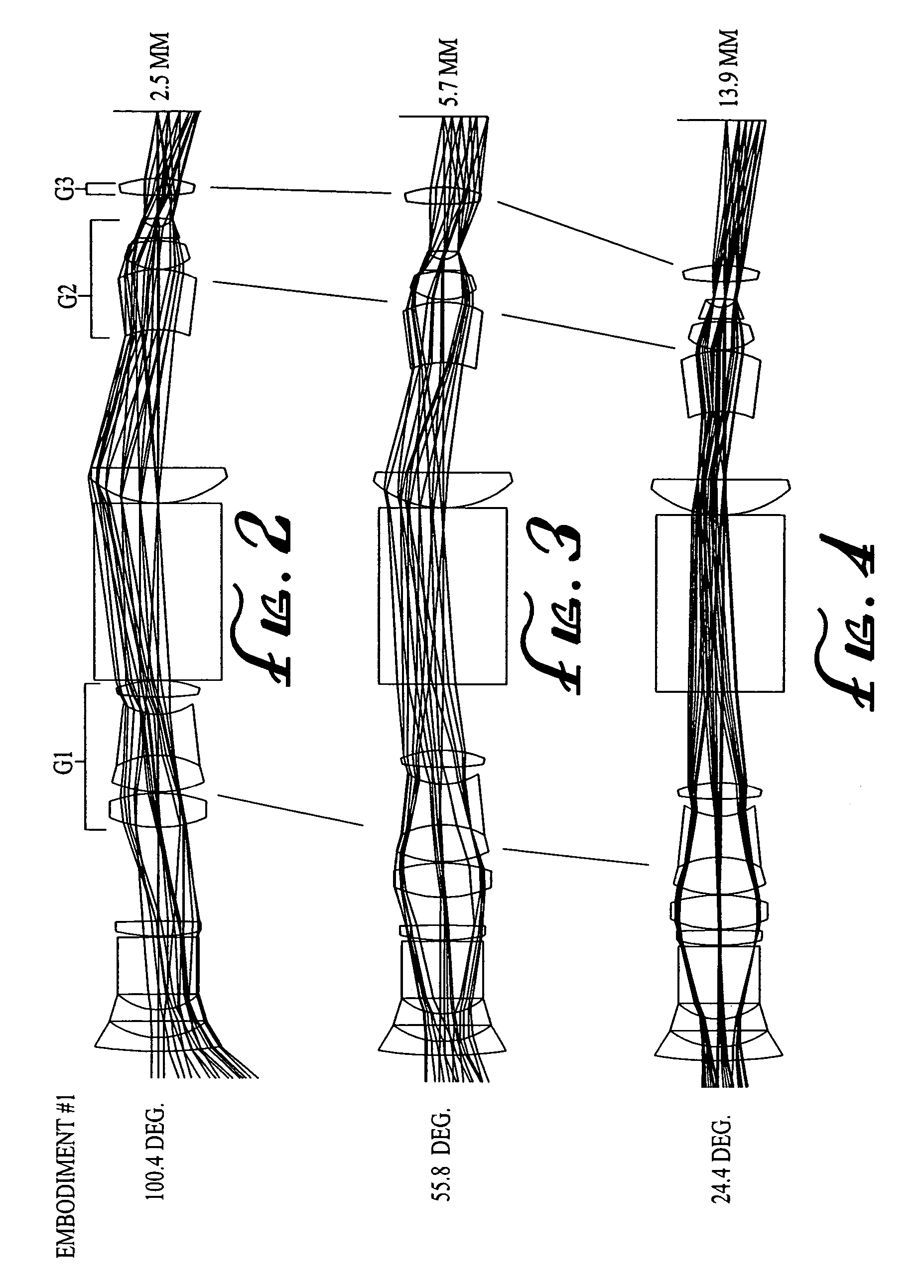Wide-range, wide-angle compound zoom with simplified zooming structure
a compound zoom and wide-angle technology, applied in the field of zoom lenses, can solve the problems of general limitations in design, and achieve the effect of simple structur
- Summary
- Abstract
- Description
- Claims
- Application Information
AI Technical Summary
Benefits of technology
Problems solved by technology
Method used
Image
Examples
Embodiment Construction
[0062]In the following description of preferred embodiments, reference is made to the accompanying drawings that form a part hereof, and in which is shown by way of illustration specific embodiments in which the invention may be practiced. It is to be understood that other embodiments may be utilized and structural changes may be made without departing from the scope of the preferred embodiments of the present invention.
[0063]Embodiments of the present invention are directed to an optionally rotatable compound zoom design having only two or three independently moving lens groups, a large zoom ratio and a wide field of view at the shortest focal length, and having sufficient performance to be used with a 3 megapixel class sensor with a pixel size of 2.4 μm. The compound zoom system according to embodiments of the present invention can also utilize the zooming groups as focusing groups and for athermalization, thus maintaining a relatively simple mechanical structure.
[0064]First exemp...
PUM
 Login to View More
Login to View More Abstract
Description
Claims
Application Information
 Login to View More
Login to View More - R&D
- Intellectual Property
- Life Sciences
- Materials
- Tech Scout
- Unparalleled Data Quality
- Higher Quality Content
- 60% Fewer Hallucinations
Browse by: Latest US Patents, China's latest patents, Technical Efficacy Thesaurus, Application Domain, Technology Topic, Popular Technical Reports.
© 2025 PatSnap. All rights reserved.Legal|Privacy policy|Modern Slavery Act Transparency Statement|Sitemap|About US| Contact US: help@patsnap.com



